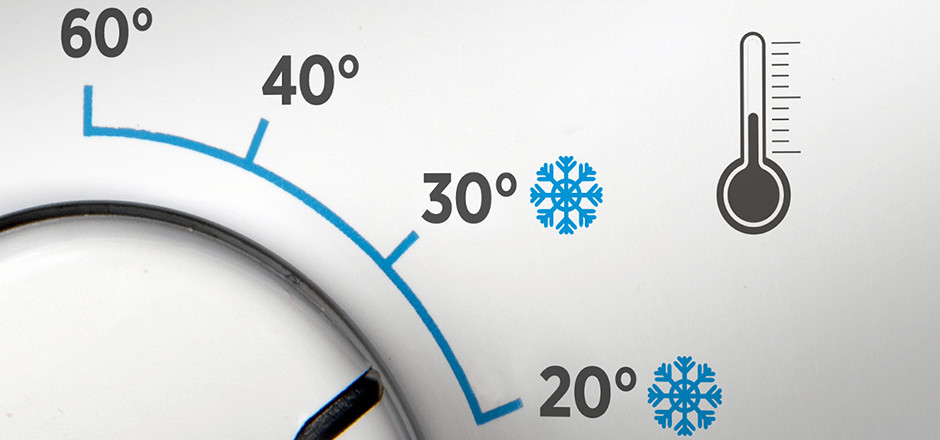You may think that washing on the highest temperature setting is the only way you’ll get a thorough clean, but doing so may actually damage your garments and their colours, plus it could’ also be costing you more in energy. If you’re interested in washing your clothes at a lower temperature, read on to learn about how a cold wash can still give you great cleaning results and see more about finding the right wash temperature for your laundry in our washing machine temperature guide.

Your guide to washing laundry in cold water
Why does the temperature of the water matter?
When removing stains and soiling from your garments, cleaning your laundry depends on four things:
Thermal energy. This comes from the temperature of the water, where cleaning is usually more effective on warm or hot water.
Your laundry detergent and how much you use. The ingredients in your laundry detergent and the dosing is also important when it comes to the chemical energy needed for cleaning.
The length of your wash cycle. When you set your cycle to wash over a longer time, this increases the effect of mechanical energy on your clothes, working to remove stains more effectively.
Cycle speed. The energy from the agitation your washing machine creates also contributes to cleaning your clothes and removing stains.
When you wash with cold water, you need to increase the input from one of the other areas that your wash cycle depends on (that’s not the water temperature), which is where a concentrated detergent, designed to work at low temperatures, becomes important.
Remember, washing with a warm water temperature – on cycles at 40°C or higher – can come with a few downsides:
It can cause colours to fade.
It can damage certain fabrics over time.
It can cause items to shrink in the laundry.
Is uses more energy and is less cost-effective.
Before you wash any garment, make sure you check the fabric care label to make sure that you’re washing your clothes on the right setting.

When to use a cold wash cycle?
Many avoid selecting the cold wash cycle on their washing machine, either out of habit or because they’re worried their garments won’t come out clean. However, innovations in washing machine technology and washing detergents, which have been specifically designed with cold washes in mind, mean that a cold wash cycle is more than up to the challenge of everyday washing. Aside from keeping those colours bright and the size they’re meant to be, cold washes also use less energy and help save you money.
To debunk common misconceptions about washing in cold water, we have launched a campaign where we show you how you can reduce your laundry’s environmental impact. We encourage you to join the #washcoldchallenge and, pledge that you’ll use cold wash.
Washing on cold temperatures
Your washing machine will have the option to wash on cold water, which can be as low as 20°C, but most machines set their cold water settings on 30°C. One of the main benefits of choosing a wash temperature of 30°C is that on average you can save 57% on running costs, when compared washing at 40°C.
What temperature to wash delicates at?
While some washing machine temperature settings go as low as 20°C, most cold washes start at 30°C. A setting of 30°C is usually recommended for washing delicate clothes when combined with a delicate cycle, and not on quick wash. This means low temperatures can be used with items like wool and silk when set to a delicate or hand wash cycle. You can also wash colours at 30°C. You’ll see the best laundry results if you use a detergent that’s specifically designed for cooler washes.
Related articles
Great stain removal with quick wash even on cold wash
Sometimes you need clean clothes in a hurry. Sometimes you don’t have close to a full wash worth of dirty garments. Sometimes you just can’t wait for the normal cycle to finish.
Washing machine care tips
It’s not just your washing detergent that gives your clothes their smell, your washing machine plays a part, too.
How can living in a hard water area affect your laundry
Washing in hard water can leave mineral deposits behind on your clothes that can cause soiling to build up on your clothes and also cause your whites to look dingy.


